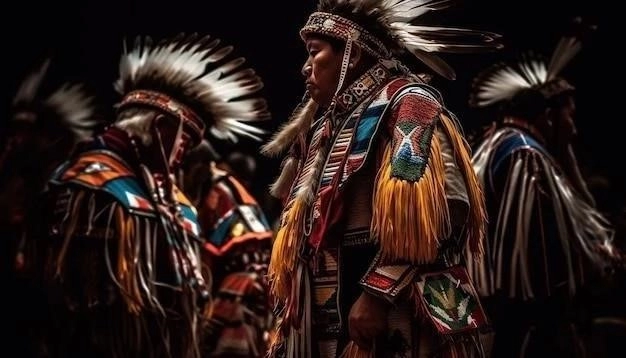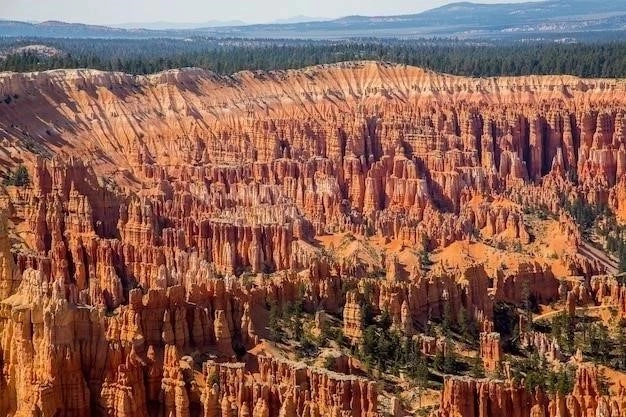Introduction: The Cradle of a Nation
The American Northeast, a region steeped in history, stands as the bedrock of a nation. From the first European settlements to the birth of American independence, the Northeast has been the crucible where the nation’s identity was forged.

Colonial Beginnings: Seeds of Revolution
The narrative of the American Northeast commences with the arrival of European colonists in the 17th century, forever altering the course of the region’s destiny. Driven by a pursuit of religious freedom and economic opportunity, these early settlers established colonies that would become the genesis of a new nation. The Northeast, with its abundance of natural resources and strategic harbors, emerged as a vital hub for trade and commerce, attracting waves of immigrants seeking a foothold in the New World. However, the seeds of discontent were sown early on as the colonists chafed under the restrictive policies of British rule.
The imposition of taxes without representation, epitomized by the Stamp Act and the Tea Act, ignited a firestorm of protest and galvanized the colonists against perceived tyranny. Secret societies like the Sons of Liberty emerged, orchestrating acts of defiance that laid bare the growing rift between the colonies and the mother country. From the Boston Massacre, a tragic clash that left five colonists dead, to the Boston Tea Party, a daring act of rebellion against British taxation, the Northeast became the epicenter of a burgeoning revolutionary fervor.
The colonial experience in the Northeast was not without its complexities. The arrival of Europeans brought about profound changes for the indigenous populations who had long inhabited these lands. Conflicts over territory and resources led to devastating wars and the displacement of Native American communities. Furthermore, the institution of slavery, tragically interwoven into the fabric of colonial society, cast a long shadow over the region’s history, highlighting the contradictions inherent in the pursuit of liberty and equality.
The American Revolution: Forging a New Nation
The simmering tensions between Great Britain and its American colonies reached a boiling point in the Northeast, igniting the flames of revolution that would forever alter the course of history. From the battlefields of Lexington and Concord, where the “shot heard ’round the world” echoed, to the strategic heights of Saratoga, where American forces secured a pivotal victory, the Northeast became a crucible in which a new nation was forged.
Led by visionary leaders such as George Washington, John Adams, and Benjamin Franklin, the Continental Army, though often outmatched and outmaneuvered, fought with unwavering determination against the might of the British Empire. The harsh winter encampment at Valley Forge tested the resolve of the American spirit, yet from the depths of adversity emerged a renewed commitment to the ideals of liberty and self-determination. The Northeast, with its network of patriots, provided vital support to the war effort, supplying troops, provisions, and unwavering morale.
The signing of the Declaration of Independence in Philadelphia, a momentous event that reverberated across the globe, formally severed the ties between the colonies and Great Britain, giving birth to the United States of America. The Northeast, as the birthplace of this bold experiment in self-governance, played a pivotal role in shaping the principles upon which the nation was founded. The legacy of the American Revolution continues to inspire generations, serving as a testament to the enduring power of courage, resilience, and the pursuit of freedom.

Industrial Revolution and Urbanization: Shaping the Modern Northeast
The 19th century ushered in an era of unprecedented transformation in the American Northeast, as the Industrial Revolution took root and reshaped the region’s landscape, economy, and social fabric. The Northeast, endowed with abundant natural resources, a skilled workforce, and access to capital, became the epicenter of industrial growth, witnessing the rise of factories, mills, and manufacturing centers that would power the nation’s economic engine.
Cities such as Boston, New York, and Philadelphia experienced exponential growth, attracting waves of immigrants seeking opportunity amidst the burgeoning industrial centers. The Northeast’s urban centers transformed into vibrant melting pots, where diverse cultures converged, contributing to the region’s unique character and dynamism. However, this period of rapid industrialization and urbanization also brought about significant challenges. The influx of workers led to overcrowded housing, inadequate sanitation, and social unrest. The plight of factory workers, often subjected to harsh working conditions and low wages, gave rise to labor movements and social reform efforts that sought to address the inequalities of the industrial age.
The Northeast’s industrial might played a pivotal role in shaping the nation’s destiny, fueling westward expansion, and establishing the United States as a global economic power. The legacy of this transformative period is etched into the very fabric of the region, from its iconic skylines to its enduring tradition of innovation and entrepreneurship. The Northeast’s journey through the Industrial Revolution stands as a testament to the human capacity for both progress and adaptation in the face of profound change.

Immigration and Cultural Fusion: A Tapestry of Diversity
The American Northeast has long served as a beacon of hope and opportunity for immigrants from across the globe, drawing waves of newcomers seeking a better life and contributing to the region’s extraordinary tapestry of diversity. From the arrival of European settlers in the colonial era to the influx of Irish, Italian, Jewish, and Eastern European immigrants in the 19th and 20th centuries, the Northeast has been a crucible of cultural exchange and fusion.
Each wave of immigration has enriched the region’s social fabric, bringing with it unique traditions, languages, cuisines, and perspectives. The Northeast’s urban centers, in particular, have served as vibrant melting pots, where different cultures have intersected and blended, creating a rich and dynamic cultural landscape. The contributions of immigrants are evident in every facet of life in the Northeast, from its iconic foods and music to its thriving arts and cultural institutions.
The journey of immigrants in the Northeast has not been without its challenges. Discrimination, prejudice, and economic hardship have tested their resilience and determination. Yet, despite these obstacles, immigrants have persevered, building vibrant communities and contributing immeasurably to the region’s social, economic, and cultural vitality. The Northeast’s legacy as a land of opportunity and a mosaic of cultures stands as a testament to the enduring power of immigration to shape and enrich the American experience.

Iconic Landmarks: Symbols of American Identity
The American Northeast stands as a repository of history, its landscape adorned with iconic landmarks that embody the nation’s enduring spirit, ideals, and aspirations. These structures, monuments, and hallowed grounds serve as tangible reminders of pivotal events, influential figures, and the values upon which the United States was founded. From the bustling streets of Manhattan to the tranquil shores of New England, the Northeast’s landmarks beckon travelers and history enthusiasts alike, offering a glimpse into the nation’s rich and complex narrative.
The Statue of Liberty, a beacon of hope and freedom, has welcomed generations of immigrants to American shores, while Independence Hall in Philadelphia stands as a testament to the birth of a nation, where the Declaration of Independence and the Constitution were debated and signed. Boston’s Freedom Trail winds its way through the city’s historic heart, connecting sites that witnessed the struggle for independence, while the soaring skyscrapers of New York City, including the Empire State Building and the Chrysler Building, embody the nation’s ambition and architectural prowess.
These landmarks, each with its own unique story to tell, transcend their physical presence, serving as powerful symbols of American identity, resilience, and the enduring pursuit of liberty, justice, and opportunity. They stand as testaments to the visionaries, pioneers, and everyday citizens who have shaped the course of American history, inspiring generations to come with their enduring legacy.

6.1. The Statue of Liberty and Ellis Island: Gateways of Hope
Rising majestically from the waters of New York Harbor, the Statue of Liberty stands as an enduring symbol of freedom and opportunity, a beacon of hope to millions of immigrants who crossed the Atlantic in search of a better life. A gift from the people of France, the statue, with its outstretched arm holding aloft a torch of enlightenment, embodies the ideals of liberty and democracy that have drawn generations to American shores.
Adjacent to the Statue of Liberty lies Ellis Island, a poignant reminder of the immigrant experience and the role of the Northeast as a gateway to the New World. Between 1892 and 1954, Ellis Island served as the nation’s busiest immigration inspection station, processing over 12 million newcomers. For many, Ellis Island marked their first steps on American soil, a place of both anticipation and trepidation as they embarked on their new lives in a new land.
Today, the Statue of Liberty and Ellis Island stand as a united testament to the transformative power of immigration and the enduring promise of the American dream. They serve as a poignant reminder of the nation’s rich history as a melting pot of cultures and a beacon of hope for those seeking refuge and opportunity. A visit to these iconic landmarks is a journey through time, offering a glimpse into the lives of those who came before and the enduring legacy of the American spirit.
6.2. Independence Hall and the Liberty Bell: Echoes of Freedom
In the heart of Philadelphia, Independence Hall stands as a hallowed shrine to American democracy, its brick facade whispering tales of revolution, resilience, and the birth of a nation. Within these hallowed halls, the Founding Fathers, driven by an unwavering belief in liberty and self-determination, gathered to debate and ultimately sign the Declaration of Independence, a document that boldly proclaimed the colonies’ separation from Great Britain and set in motion the creation of the United States of America.
Adjacent to Independence Hall, the Liberty Bell, with its iconic crack and inscription proclaiming “Proclaim Liberty Throughout All the Land,” has become an enduring symbol of freedom and the pursuit of justice. Though its original purpose was to summon lawmakers to meetings and citizens to public announcements, the Liberty Bell has transcended its utilitarian beginnings to embody the ideals of liberty and equality that lie at the heart of the American experiment.
Together, Independence Hall and the Liberty Bell serve as powerful reminders of the sacrifices made by those who fought for American independence and the enduring legacy of their vision. These iconic landmarks beckon visitors from across the globe, offering a tangible connection to the past and an opportunity to reflect on the principles upon which the United States was founded.

6.3. The Freedom Trail: Tracing the Path of Revolution
Winding its way through the heart of Boston, the Freedom Trail stands as a testament to the city’s pivotal role in the American Revolution, a tangible reminder of the events and individuals that ignited a nation’s fight for independence. Marked by a distinctive red brick line, this 2.5-mile path meanders past 16 historic sites, each offering a glimpse into the tumultuous years leading up to the birth of the United States.
From the Boston Common, where British troops camped on the eve of revolution, to the Old North Church, where lanterns signaled the start of Paul Revere’s famous ride, the Freedom Trail carries visitors on a journey through time. Along the way, landmarks such as Faneuil Hall, a cradle of revolutionary fervor, and the Paul Revere House, a testament to colonial craftsmanship, offer tangible connections to the past.
Walking the Freedom Trail is to retrace the footsteps of patriots, revolutionaries, and ordinary citizens caught in the throes of extraordinary times. It is an opportunity to engage with history firsthand, to reflect on the sacrifices made in the pursuit of liberty, and to gain a deeper appreciation for the enduring legacy of the American Revolution.
Cultural Heritage: From Literature to Art
The American Northeast has long served as a fertile ground for artistic and intellectual expression, nurturing a rich cultural heritage that continues to shape the nation’s identity. From the transcendentalist musings of Thoreau in the woods of Walden Pond to the vibrant canvases of the Hudson River School painters, the Northeast has inspired generations of artists, writers, and thinkers.
The region’s literary landscape is studded with towering figures who have left an indelible mark on American letters. The novels of Nathaniel Hawthorne, the poetry of Emily Dickinson, and the essays of Ralph Waldo Emerson explored themes of individuality, morality, and the search for meaning in a rapidly changing world. The Northeast’s urban centers, with their teeming streets and diverse populations, provided rich fodder for writers such as Walt Whitman, whose evocative poetry captured the energy and spirit of 19th-century America.
In the visual arts, the Northeast fostered movements that transformed American artistic expression. The Hudson River School painters, captivated by the region’s natural beauty, sought to capture the grandeur of its landscapes on canvas, while the Ashcan School artists turned their attention to the grit and dynamism of urban life. From the iconic illustrations of Norman Rockwell to the abstract expressionism of Jackson Pollock, the Northeast has remained at the forefront of artistic innovation, shaping the nation’s cultural landscape.

The Northeast Today: A Blend of Tradition and Progress
The American Northeast, a region steeped in history and tradition, stands at the forefront of progress, seamlessly blending its rich heritage with a dynamic spirit of innovation and reinvention. From its bustling metropolises to its charming coastal towns, the Northeast embodies a unique juxtaposition of old and new, where cobblestone streets give way to soaring skyscrapers, and centuries-old traditions coexist with cutting-edge technologies.
The Northeast remains a global center of commerce, education, and culture, home to world-renowned universities, financial institutions, and cultural attractions. The region’s commitment to education and innovation is evident in its thriving research hubs, technological advancements, and entrepreneurial spirit. At the same time, the Northeast has made significant strides in preserving its historical landmarks, cultural institutions, and natural beauty, ensuring that future generations can connect with the region’s rich past.
The Northeast’s enduring appeal lies in its ability to seamlessly weave together tradition and progress, creating a vibrant tapestry of history, culture, and innovation. From its charming seaside towns to its bustling urban centers, the Northeast offers a unique blend of experiences, where visitors can explore centuries-old landmarks, enjoy world-class dining and entertainment, and witness firsthand the region’s dynamic spirit of progress.










